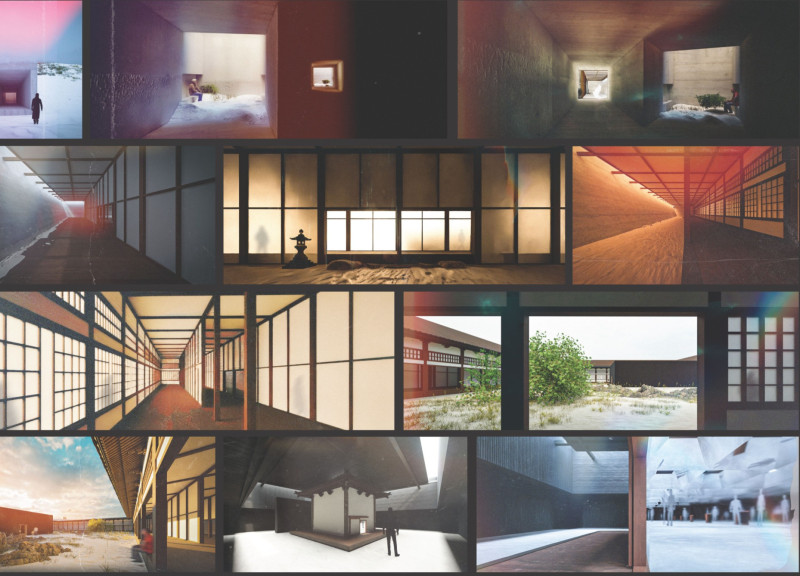5 key facts about this project
At its core, the project embodies the idea of connectivity—not only between its various internal spaces but also in relation to the external environment. This is achieved through an open floor plan that facilitates natural movement and interaction, fostering a sense of community. Large, strategically placed windows allow for an abundance of natural light to flood the interior, creating a warm and inviting atmosphere. This intentional choice of design elevates user experience, as it diminishes the boundary between indoor and outdoor environments, promoting a seamless transition and enhancing the overall spatial quality.
The architectural materials selected for this project further accentuate its ethos of sustainability and contextual relevance. A combination of locally sourced stone, timber, and glass not only grounds the structure in its geographical location but also addresses contemporary concerns regarding environmental impact. The use of sustainable building materials demonstrates a commitment to eco-friendly practices while ensuring durability and aesthetic appeal. The timber brings warmth and texture, while the glass enhances transparency and openness, effectively bridging the indoor and outdoor environments.
A significant aspect of the design is the incorporation of green spaces, both inside and outside the structure. This deliberate decision underscores the importance of nature in urban settings and promotes biodiversity. Roof gardens and vertical plantings serve as both an aesthetic enhancement and a functional element, contributing to better air quality and reducing urban heat. These green features also provide residents and users with spaces for relaxation and reflection, further enhancing their overall experience.
The project’s uniqueness lies not only in its thoughtful design and sustainable practices but also in its responsiveness to the local context. It reflects a clear understanding of the cultural and historical background of the area, integrating architectural elements that resonate with local identity while still pushing the boundaries of modern design. This sensitive approach ensures that the building does not merely exist in the urban landscape but becomes a part of it, enriching the locality’s character.
Details such as the roofline articulate a modern aesthetic while nodding to traditional forms found in the surrounding architecture. The façade’s composition blends solid and void, allowing for dynamic light play throughout the day and creating visual interest from multiple viewpoints. In terms of functionality, multi-use spaces are thoughtfully designed to accommodate various community events, workshops, and social gatherings, thus reinforcing the project’s role as a community hub.
Moreover, the design incorporates advanced energy-efficient systems, including solar panels and high-performance insulation, which collectively reduce the energy consumption of the building. This technical integration not only reflects a forward-thinking approach to architecture but also emphasizes the commitment to creating spaces that are not just visually appealing but also environmentally responsible.
As one delves deeper into the architectural plans and sections of this project, it becomes evident that every design decision has been meticulously considered to achieve a harmonious balance between beauty and functionality. The organization of space, the interaction of materials, and the engagement with the surroundings all contribute to a holistic architectural experience.
Readers are encouraged to explore further the architectural plans, sections, and detailed designs to fully appreciate the intricacies and carefully crafted ideas within this project. A thorough review of these elements will provide additional insights into how this architectural endeavor successfully navigates the complexities of modern design while remaining firmly rooted in its context. By understanding the underlying concepts and design intentions, one can gain a greater appreciation for the vision behind this remarkable project.























